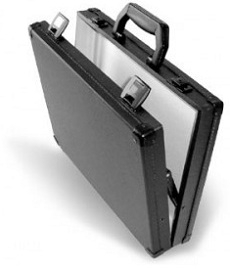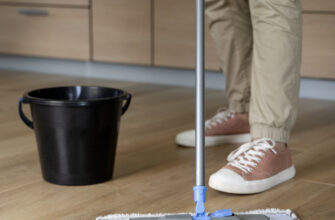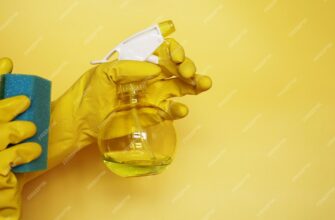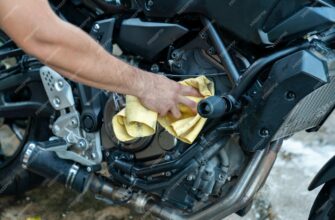- imagejpeg — Выводит изображение в браузер или пишет в файл
- Описание
- Список параметров
- Возвращаемые значения
- Примеры
- Примечания
- Смотрите также
- Вывод всех картинок из папки на PHP
- imagejpeg
- Описание
- Список параметров
- Возвращаемые значения
- Список изменений
- Примеры
- Примечания
- Смотрите также
- User Contributed Notes 34 notes
imagejpeg — Выводит изображение в браузер или пишет в файл
(PHP 4, PHP 5, PHP 7)
imagejpeg — Выводит изображение в браузер или пишет в файл
Описание
Функция imagejpeg() создаёт файл JPEG из изображения image .
Список параметров
Ресурс изображения, полученный одной из функций создания изображений, например, такой как imagecreatetruecolor() .
Путь для сохранения файла. Если не установлен или равен NULL , изображение будет выведено в поток вывода в бинарном виде.
Если вы хотите пропустить этот параметр и использовать quality , то укажите NULL .
Необязательный параметр, и может принимать значения в диапазоне от 0 (низкое качество, маленький размер файла) до 100 (высокое качество, большой размер файла). По умолчанию используется качество IJG (около 75).
Возвращаемые значения
Возвращает TRUE в случае успешного завершения или FALSE в случае возникновения ошибки.
Примеры
Пример #1 Вывод JPEG-изображения
// Создаём пустое изображение и добавляем текст
$im = imagecreatetruecolor ( 120 , 20 );
$text_color = imagecolorallocate ( $im , 233 , 14 , 91 );
imagestring ( $im , 1 , 5 , 5 , ‘A Simple Text String’ , $text_color );
// Устанавливаем тип содержимого в заголовок, в данном случае image/jpeg
header ( ‘Content-Type: image/jpeg’ );
// Выводим изображение
imagejpeg ( $im );
// Освобождаем память
imagedestroy ( $im );
?>
Результатом выполнения данного примера будет что-то подобное:
Пример #2 Сохранение изображения JPEG
// Создаём пустое изображение и добавляем текст
$im = imagecreatetruecolor ( 120 , 20 );
$text_color = imagecolorallocate ( $im , 233 , 14 , 91 );
imagestring ( $im , 1 , 5 , 5 , ‘A Simple Text String’ , $text_color );
// Сохраняем изображение в ‘simpletext.jpg’
imagejpeg ( $im , ‘simpletext.jpg’ );
// Освобождаем память
imagedestroy ( $im );
?>
Пример #3 Вывод JPEG-изображения с 75% качеством
// Создаём пустое изображение и добавляем текст
$im = imagecreatetruecolor ( 120 , 20 );
$text_color = imagecolorallocate ( $im , 233 , 14 , 91 );
imagestring ( $im , 1 , 5 , 5 , ‘A Simple Text String’ , $text_color );
// Устанавливаем тип содержимого в заголовок, в данном случае image/jpeg
header ( ‘Content-Type: image/jpeg’ );
// Пропускаем параметр filename, используя NULL, а затем устанавливаем качество в 75%
imagejpeg ( $im , NULL , 75 );
// Освобождаем память
imagedestroy ( $im );
?>
Примечания
Замечание: Поддержка JPEG доступна только в случае, если PHP был скомпилирован с GD-1.8 или более поздней версии.
Если требуется вывести Progressive JPEG (прогрессивное представление данных), то необходимо использовать функцию imageinterlace() для активации соответствующего режима.
Смотрите также
- imagepng() — Вывод PNG изображения в броузер или файл
- imagegif() — Выводит изображение в браузер или пишет в файл
- imagewbmp() — Выводит изображение в браузер или пишет в файл
- imageinterlace() — Включение или выключение интерлейсинга
- imagetypes() — Возвращает список типов изображений, поддерживаемых PHP сборкой
Источник
Вывод всех картинок из папки на PHP
Если Вы делали сайт-визитку, то перед Вами могла встать задача по выводу какого-нибудь портфолио, каких-то работ, другими словами, изображений. Предположим, Admin-панели у сайта нет, а вот новые работы заказчик должен добавлять максимально легко, не залезая в исходный код. Вот в таких случаях Вам очень поможет данная статья, в которой мы реализуем вывод всех картинок из папки на PHP.
Привожу сразу весь PHP-код:
Разумеется, здесь идёт смесь представления и реализации, что, конечно, нехорошо, но данный скрипт Вы должны будете подстроить под свой движок. Возможно, у Вас и таблиц не будет. В остальном, думаю, проблем с понимаем, как вывести на сайт изображения из папки на PHP, возникнуть не должно.
Теперь для того, чтобы добавить очередное изображение на сайт, достаточно просто скопировать необходимую картинку в папку «images«. Вот таким простым способом реализуется задача, которая, на первый взгляд, неразрешима без вмешательства в исходный код, базу данных, либо создания Admin-панели.
Копирование материалов разрешается только с указанием автора (Михаил Русаков) и индексируемой прямой ссылкой на сайт (http://myrusakov.ru)!
Добавляйтесь ко мне в друзья ВКонтакте: http://vk.com/myrusakov.
Если Вы хотите дать оценку мне и моей работе, то напишите её в моей группе: http://vk.com/rusakovmy.
Если Вы не хотите пропустить новые материалы на сайте,
то Вы можете подписаться на обновления: Подписаться на обновления
Если у Вас остались какие-либо вопросы, либо у Вас есть желание высказаться по поводу этой статьи, то Вы можете оставить свой комментарий внизу страницы.
Порекомендуйте эту статью друзьям:
Если Вам понравился сайт, то разместите ссылку на него (у себя на сайте, на форуме, в контакте):
Она выглядит вот так:
Источник
imagejpeg
(PHP 4, PHP 5, PHP 7, PHP 8)
imagejpeg — Выводит изображение в браузер или пишет в файл
Описание
Функция imagejpeg() создаёт файл JPEG из изображения image .
Список параметров
Объект GdImage , возвращаемый одной из функций создания изображений, например, такой как imagecreatetruecolor() .
Путь, или открытый потоковый ресурс (который автоматически закрывается после завершения функции), для сохранения файла. Если не установлен или равен null , изображение будет выведено в поток вывода в бинарном виде.
Необязательный параметр, и может принимать значения в диапазоне от 0 (низкое качество, маленький размер файла) до 100 (высокое качество, большой размер файла). По умолчанию ( -1 ) используется качество IJG (около 75).
Возвращаемые значения
Возвращает true в случае успешного выполнения или false в случае возникновения ошибки.
Однако, если libgd не может вывести изображения, эта функция вернёт true .
Список изменений
| Версия | Описание |
|---|---|
| 8.0.0 | image теперь ожидает экземпляр GdImage ; ранее ожидался ресурс ( resource ). |
Примеры
Пример #1 Вывод JPEG-изображения в браузер
// Создаём пустое изображение и добавляем текст
$im = imagecreatetruecolor ( 120 , 20 );
$text_color = imagecolorallocate ( $im , 233 , 14 , 91 );
imagestring ( $im , 1 , 5 , 5 , ‘A Simple Text String’ , $text_color );
// Устанавливаем тип содержимого в заголовок, в данном случае image/jpeg
header ( ‘Content-Type: image/jpeg’ );
// Выводим изображение
imagejpeg ( $im );
// Освобождаем память
imagedestroy ( $im );
?>
Результатом выполнения данного примера будет что-то подобное:
Пример #2 Сохранение изображения JPEG в файл
// Создаём пустое изображение и добавляем текст
$im = imagecreatetruecolor ( 120 , 20 );
$text_color = imagecolorallocate ( $im , 233 , 14 , 91 );
imagestring ( $im , 1 , 5 , 5 , ‘A Simple Text String’ , $text_color );
// Сохраняем изображение в ‘simpletext.jpg’
imagejpeg ( $im , ‘simpletext.jpg’ );
// Освобождаем память
imagedestroy ( $im );
?>
Пример #3 Вывод JPEG-изображения с 75% качеством в браузер
// Создаём пустое изображение и добавляем текст
$im = imagecreatetruecolor ( 120 , 20 );
$text_color = imagecolorallocate ( $im , 233 , 14 , 91 );
imagestring ( $im , 1 , 5 , 5 , ‘A Simple Text String’ , $text_color );
// Устанавливаем тип содержимого в заголовок, в данном случае image/jpeg
header ( ‘Content-Type: image/jpeg’ );
// Пропускаем параметр filename, используя NULL, а затем устанавливаем качество в 75%
imagejpeg ( $im , NULL , 75 );
// Освобождаем память
imagedestroy ( $im );
?>
Примечания
Если требуется вывести Progressive JPEG (прогрессивное представление данных), то необходимо использовать функцию imageinterlace() для активации соответствующего режима.
Смотрите также
- imagepng() — Вывод PNG изображения в браузер или файл
- imagegif() — Выводит изображение в браузер или пишет в файл
- imagewbmp() — Выводит изображение в браузер или пишет в файл
- imageinterlace() — Включение или выключение интерлейсинга
- imagetypes() — Возвращает список типов изображений, поддерживаемых PHP сборкой
User Contributed Notes 34 notes
I didn’t find any example like this on the Web, so I mixed pieces together.. hope this will save time to other people!
Here’s a complete solution to READ any image (gif jpg png) from the FILESYSTEM, SCALE it to a max width/height, SAVE the scaled image to a BLOB field keeping the original image type. Quite tricky..
function scaleImageFileToBlob ( $file ) <
$source_pic = $file ;
$max_width = 200 ;
$max_height = 200 ;
list( $width , $height , $image_type ) = getimagesize ( $file );
switch ( $image_type )
<
case 1 : $src = imagecreatefromgif ( $file ); break;
case 2 : $src = imagecreatefromjpeg ( $file ); break;
case 3 : $src = imagecreatefrompng ( $file ); break;
default: return » ; break;
>
$x_ratio = $max_width / $width ;
$y_ratio = $max_height / $height ;
if( ( $width $max_width ) && ( $height $max_height ) ) <
$tn_width = $width ;
$tn_height = $height ;
>elseif (( $x_ratio * $height ) $max_height ) <
$tn_height = ceil ( $x_ratio * $height );
$tn_width = $max_width ;
>else <
$tn_width = ceil ( $y_ratio * $width );
$tn_height = $max_height ;
>
$tmp = imagecreatetruecolor ( $tn_width , $tn_height );
/* Check if this image is PNG or GIF, then set if Transparent*/
if(( $image_type == 1 ) OR ( $image_type == 3 ))
<
imagealphablending ( $tmp , false );
imagesavealpha ( $tmp , true );
$transparent = imagecolorallocatealpha ( $tmp , 255 , 255 , 255 , 127 );
imagefilledrectangle ( $tmp , 0 , 0 , $tn_width , $tn_height , $transparent );
>
imagecopyresampled ( $tmp , $src , 0 , 0 , 0 , 0 , $tn_width , $tn_height , $width , $height );
/*
* imageXXX() only has two options, save as a file, or send to the browser.
* It does not provide you the oppurtunity to manipulate the final GIF/JPG/PNG file stream
* So I start the output buffering, use imageXXX() to output the data stream to the browser,
* get the contents of the stream, and use clean to silently discard the buffered contents.
*/
ob_start ();
switch ( $image_type )
<
case 1 : imagegif ( $tmp ); break;
case 2 : imagejpeg ( $tmp , NULL , 100 ); break; // best quality
case 3 : imagepng ( $tmp , NULL , 0 ); break; // no compression
default: echo » ; break;
>
?>
So, let’s suppose you have a form where a user can upload an image, and you have to scale it and save it into your database.
[..] // the user has clicked the Submit button..
// Check if the user entered an image
if ( $_FILES [ ‘imagefile’ ][ ‘name’ ] != » ) <
$image = scaleImageFileToBlob ( $_FILES [ ‘imagefile’ ][ ‘tmp_name’ ]);
if ( $image == » ) <
echo ‘Image type not supported’ ;
> else <
$image_type = $_FILES [ ‘imagefile’ ][ ‘type’ ];
$image = addslashes ( $image );
$query = «UPDATE yourtable SET image_type=’ $image_type ‘, image=’ $image ‘ WHERE . » ;
$result = mysql_query ( $query );
if ( $result ) <
echo ‘Image scaled and uploaded’ ;
> else <
echo ‘Error running the query’ ;
>
>
>
[[Editor’s note: removed the header()-call since it is not required when outputting inline image-data]]
One single code line, solve-me after 3 hours of blind search!
. ob_start();
imagejpeg( $img, NULL, 100 );
imagedestroy( $img );
$i = ob_get_clean();
echo » «; //saviour line!
I worked out a script that allows the transfer of alphanumeric data to be placed on an image. The HTML feature is img src and the php feature is imagettftext. This simple code will increment from 1 to 3 on images.
//ImageCall.php — This script will call a script to produce the image.
for( $next = 1 ; $next 4 ; $next ++)<
print «Image $next :
» ;
print » $next ‘>» ;
print «
» ;
>
?>
//Image.php — This script creates a square image and places the text on it.
// image size and color
$im = ImageCreate ( 77 , 77 );
$color1 = ImageColorAllocate ( $im , 0x66 , 0xCC , 0x00 );
$color2 = ImageColorAllocate ( $im , 0x33 , 0x66 , 0x00 );
$color3 = ImageColorAllocate ( $im , 0x00 , 0x99 , 0x00 );
$color4 = ImageColorAllocate ( $im , 0x3D , 0x3D , 0x3D );
// image creation
ImageFilledRectangle ( $im , 1 , 1 , 76 , 76 , $color1 );
ImageFilledpolygon ( $im , array ( 76 , 1 , 1 , 76 , 76 , 76 ), 3 , $color2 );
ImageFilledRectangle ( $im , 5 , 5 , 72 , 72 , $color3 );
// determine numeric center of image
$size = ImageTTFBBox ( 45 , 0 , ‘impact’ , $_GET [ ‘$text’ ]);
$X = ( 77 — ( abs ( $size [ 2 ]- $size [ 0 ])))/ 2 ;
$Y = (( 77 — ( abs ( $size [ 5 ] — $size [ 3 ])))/ 2 + ( abs ( $size [ 5 ] — $size [ 3 ])));
//places numeric information on image
ImageTTFText ( $im , 45 , 0 ,( $X — 1 ), $Y , $color4 , ‘impact’ , $_GET [ ‘$text’ ]);
//returns completed image to calling script
Header ( ‘Content-Type: image/png’ );
Imagejpeg ( $im );
Regarding Carl Gieringer’s comment, it is possible to have PHP files in utf-8. Just make sure the editor does not output BOM, which is unnecessary in utf-8 anyway.
Except for any editors from Microsoft, most programmer’s editors that supports utf allows you to surpress BOM.
With regard to chris.calo’s code:
// The following block retrieves the source file. It assumes the filename extensions match the file’s format.
if ( strpos($source_file,».gif») ) < $img_source = imagecreatefromgif($source_file); >
if ( (strpos($source_file,».jpg»)) || (strpos($source_file,».jpeg»)) )
. etc.
It assumes more than that, namely that the filename does not contain the strings ‘.gif’, ‘.jpg’, ‘.jpeg’, ‘.bmp’, or ‘.png’ *anywhere* in the string. Some valid files with special filenames could break this; for example, a file named «used.to.be.a.png.file.gif» would cause this script to attempt to load the file as a PNG. Obviously this is a rare case, but the issue could be easily avoided by using «else ifs» (uses less CPU time) or checking that the extension abuts the end of the string or both.
That said, the whole business could be avoided if PHP didn’t clutter the namespace with different functions to do the same thing with different image formats. Ick.
Here is the simple, but powerful script for creating thumbnails on the fly.
You can include the script
directly to www page — just put it in with width 150pix.
This resizer respects the ASPECT RATIO.
Here is the script:
// Use it this way: resize.php?pic=imageurl&width=width_in_pixels
// kokesh@kokeshnet.com 2004
header ( «Content-type: image/jpeg» );
$im = imagecreatefromjpeg ( $pic );
$orange = imagecolorallocate ( $im , 220 , 210 , 60 );
$px = ( imagesx ( $im ) — 7.5 * strlen ( $string )) / 2 ;
$old_x = imageSX ( $im );
$old_y = imageSY ( $im );
$new_w =(int)( $width );
if (( $new_w 0 ) or ( $new_w > $old_x )) <
$new_w = $old_x ;
>
$new_h =( $old_x *( $new_w / $old_x ));
if ( $old_x > $old_y ) <
$thumb_w = $new_w ;
$thumb_h = $old_y *( $new_h / $old_x );
>
if ( $old_x $old_y ) <
$thumb_w = $old_x *( $new_w / $old_y );
$thumb_h = $new_h ;
>
if ( $old_x == $old_y ) <
$thumb_w = $new_w ;
$thumb_h = $new_h ;
>
$thumb = ImageCreateTrueColor ( $thumb_w , $thumb_h );
imagecopyresized ( $thumb , $im , 0 , 0 , 0 , 0 , $thumb_w , $thumb_h , $old_x , $old_y );
imagejpeg ( $thumb , «» , 90 );
imagedestroy ( $thumb );
?>
note below is missing «()» from the ob_end_clean call:
ob_end_clean; // stop this output buffer
ob_end_clean(); // stop this output buffer
You can then use this for adding content-length headers (for example flash requires a content length in advance to create loaders)
ob_start(); // start a new output buffer
imagejpeg( $newimage, «», 90 );
$ImageData = ob_get_contents();
$ImageDataLength = ob_get_length();
ob_end_clean(); // stop this output buffer
header(«Content-type: image/jpeg») ;
header(«Content-Length: «.$ImageDataLength);
echo $ImageData;
For those looking to grab the resolution of a JPEG image without using GD nor ImageMagic. I wrote this simple function.
Too bad GD doesn’t have this very simple function for us to use.
function getJPEGresolution ( $filename ) <
$outRez =array();
// Read the file
ob_start (); // start a new output buffer
$image = file_get_contents ( $filename );
// grab DPI information from the JPG header
$outRez [ «xDPI» ] = ord ( $image [ 15 ]);
$outRez [ «yDPI» ] = ord ( $image [ 17 ]);
ob_end_clean (); // stop this output buffer
//xDPI and yDPI should equal in value. but we output both anyway.
return( $outRez );
> //end function getJPEGresolution
?>
I had a problem with denied permissions when trying to upload AND resize an image having safe_mode on. This caused that I couldn’t create the new file in which I wanted to resampled the image with nor with imagejpeg() nor with touch() and imagejpeg() after it.
Here is my solution, I didn’t test, but it’s possible, it is biting some memory:
function resize ( $image , $target_file ) <
// $image is the uploaded image
list( $width , $height ) = getimagesize ( $image [ ‘tmp_name’ ]);
//setup the new size of the image
$ratio = $width / $height ;
$new_height = 500 ;
$new_width = $new_height * $ratio ;
//move the file in the new location
move_uploaded_file ( $image [ ‘tmp_name’ ], $target_file );
// resample the image
$new_image = imagecreatetruecolor ( $new_width , $new_height );
$old_image = imagecreatefromjpeg ( $target_file );
imagecopyresampled ( $new_image , $old_image , 0 , 0 , 0 , 0 , $new_width , $new_height , $width , $height );
//output
imagejpeg ( $new_image , $target_file , 100 );
>
?>
As you can see, the function moves the uploaded file where you want to save the resampled image (move_uploaded_file is not restricted by safe_mode) and then you can resample the image, because it was created by moving it already.
Note: the directory where you want to save the file must have permissions set to 0777.
I did an experiment with the image quality parameter of the imagejpeg() function when creating jpegs. I found the optimal image quality with file size is taken into account to be 80 — very close to the default value of 75.
Anything over 80 results in an unnecessary increase in file size without much increase in image quality.
I had similar problem with safe mode. My solution is:
before imagejpeg(), touch() etc.
write:
ini_set(safe_mode,Off);
and after everything:
ini_set(safe_mode,On);
strange, but it works
Chears2All
If you wish to capture the jpg data into a variable, rather than outputting it or saving it into a file (perhaps so you can put it in a database), you might want to consider output buffering. Something along these lines should work:
(); // start a new output buffer
imagejpeg ( $newimage , NULL , 100 );
$ImageData = ob_get_contents ();
ob_end_clean ; // stop this output buffer
?>
I came here looking for something similar to the getJPEGresolution function, but noticed the drawbacks that were pointed out in the last post. So, after drawing on some other code examples on the web, I put together the following function which should always properly return the correct values. (But remember that you still need to have the EXIF extension installed with your instance of PHP for this to work!)
function jpeg_dpi ( $filename )
<
if ( exif_imagetype ( $filename ) != IMAGETYPE_JPEG ) <
return false ;
> else <
$exif = exif_read_data ( $filename , ‘IFD0’ );
>
$data = bin2hex ( substr ( $string , 14 , 4 ));
$x = hexdec ( substr ( $data , 0 , 4 ));
$y = hexdec ( substr ( $data , 4 , 4 ));
>
if ( $x || $y ) <
return array( $x , $y );
>
?>
This function returns an array with the x-resolution, y-resolution when they can be determined, otherwise FALSE.
ZERO BYTE FILE RESULT — HERE’S WHY!
Take to heart that CAUTION note on this function. If gdlib fails to output, it still returns true! I’d call that a bug personally.
GD will fail to output if you have an image exceeding its maximum undisclosed dimensions of 65500 pixels.
You’ll get a zero byte file instead
Here is a function to resize an image and maintain aspect ratio. It will resize jpeg, gif or png and could easily be modified to add bmp. The name field is the destination of the file minus the file extension:
//name= filename minus type
function createImage ( $uploadedfile , $newWidth , $name )
<
// Capture the original size of the uploaded image
if(! $info = getimagesize ( $uploadedfile ))
return false ;
switch ( $info [ ‘mime’ ])
<
case ‘image/jpeg’ :
$src = imagecreatefromjpeg ( $uploadedfile );
break;
case ‘image/gif’ :
$src = imagecreatefromgif ( $uploadedfile );
break;
case ‘image/png’ :
$src = imagecreatefrompng ( $uploadedfile );
break;
default:
return false ;
>
//Change the filename to add the filetype
$mime = split ( «image/» , $info [ ‘mime’ ]);
$filename = $name . «.» . $mime [ 1 ];
$size = getimagesize ( $uploadedfile );
$newHeight = aspect_ratio ( $size [ 0 ], $newWidth , $size [ 1 ]);
$tmp = imagecreatetruecolor ( $newWidth , $newHeight );
// this line actually does the image resizing, copying from the original
// image into the $tmp image
imagecopyresampled ( $tmp , $src , 0 , 0 , 0 , 0 , $newWidth , $newHeight , $info [ 0 ], $info [ 1 ]);
switch ( $info [ ‘mime’ ])
<
case ‘image/jpeg’ :
imagejpeg ( $tmp , $filename , 100 ); //100 is the quality settings, values range from 0-100.
break;
case ‘image/gif’ :
imagegif ( $tmp , $filename , 100 ); //100 is the quality settings, values range from 0-100.
break;
case ‘image/png’ :
imagepng ( $tmp , $filename ); //100 is the quality settings, values range from 0-100.
break;
>
imagedestroy ( $src );
imagedestroy ( $tmp ); // NOTE: PHP will clean up the temp file it created when the request
// has completed.
return true ;
>
if(! createImage ( $uploadedfile , 100 , «uploaded_images/imgname» ))
<
echo «error» ;
>
?>
Please note that there is a bug report open for the currently broken safe_mode behaviour on this function:
According to the PHP staffer who has responded the docs are wrong (I don’t agree but I’m also not their employee).
The work around is to use touch() (or any other file system function that can do this) to create the file first before using imagejpeg().
A word of warning when outputting images to the browser.
Make sure there is no extra spaces around the tags, in the file you are editing, and also any included files.
I began to think there was a bug in GD or something, and I checked the file I was working on, but forgot about the includes.
Rather than using the temporary file, as described above, you can buffer the output stream. Someone else showed me this, and it seems to work very nicely.
//Start buffering the output stream
ob_start();
// output the image as a file to the output stream
Imagejpeg($im);
//Read the output buffer
$buffer = ob_get_contents();
//clear the buffer
ob_end_clean();
//use $buffer as you wish.
[Editor’s note: fixed according to the note of roberto at ilpiola.it]
I could not find any information on changing the DPI information on a JPG file using the GD lib. Since changing this does not resize or scale the actual image, it is only a header-setting.
The following snipplet will save your $image to $file and set the DPI to 150.
( $image , $file , 75 );
// Change DPI
$dpi_x = 150 ;
$dpi_y = 150 ;
// Read the file
$size = filesize ( $file );
$image = file_get_contents ( $file );
// Update DPI information in the JPG header
$image [ 13 ] = chr ( 1 );
$image [ 14 ] = chr ( floor ( $dpi_x / 256 ));
$image [ 15 ] = chr ( $dpi_x % 256 );
$image [ 16 ] = chr ( floor ( $dpi_y / 256 ));
$image [ 17 ] = chr ( $dpi_y % 256 );
// Write the new JPG
$f = fopen ( $file , ‘w’ );
fwrite ( $f , $msg , $size );
fclose ( $f );
?>
P.s. not fully tested (yet) but it works for my images .
Don’t forget that JPEG compression has artifacts! And they’re not all really obvious. The PHP JPEG compression is pretty decent, but it seems to generally:
-Lighten the image overall, by a reasonable amount (never seen this before, but it will drive graphic designers crazy, you might want to darken the image before compressing it)
-Reduce saturation, especially with images with lots of points of different color within a few pixels of each other (this is a documented feature of JPEG)
-Seriously mess with blue colors, which is common to all JPEG but really annoying in some situations with blue and black or other detailed blue parts
You might want to consider using imagepng() and outputting a PNG image instead of a JPEG if any of the above affect you, or your image is not very photo-like. Sometimes I have an algorithm compare JPEG to PNG for an image and send the smaller version to the user.
Also, when using imagepng(), you should use imageinterlace() before it 95% of the time. Interlaced JPEGs load progressively, improving in quality as the image loads, so users on slower connections see the whole image at low quality. All this happens without affecting the file size (actually, sometimes the file size is smaller!) or final quality.
Hope this helps a few people out. It’s not all that obvious without lots of playing around.
Don’t be like me racking my brain for hours trying to figure out why my xxx.php file outputs http://localhost/xxx.php as a one line response.
Most likely, you have either:
1. whitespaces before or after the php tags
2. need to set header(‘Content-type: image/jpeg’);
3. if you have required files. be sure nothing is outputted. no test print statements because page expects image information
4. there is an error in your code
in my case, it was 4. there is a reason why the function call base64decode does not work.
it’s actually: base64_decode()
by the way, other ways to validate your image encoded in base64 is to use the following tag:
I was pulling a blob encoded base 64 data from mysql database and trying to render it on a page
hope this helps someone.
Here’s another on-the-fly thumbnail creation script.
When I scripted the pictuerviewer on my page, I had all the pictures only in full size and qualit, because I wanted the posibility für visitors to download the pictures.
But as Imagesizes of more than 4 MP are to large for websites, I created thumbnails and the smaller pictures on the fly. But I found out, that the Script needed too much RAM, especially in the thumbnail overview, when I had more then 50 thumbnails to create on the fly at the same time.
So I modified my image creator and my viewer to let them store images, that are created. So only the first visitor has to wait (which is usually me for controlling the uploads und updates), all other visitors get the stored images, which is much faster.
Create different folders. I have a main folder called ‘imagesdb’ and the tree subfolders full (Full quality images), show (images for the picture viewer) and thumb (for thumbnails in overview).
Store the script for example as image.php and link it like that:
= «foo.jpg» ;
$style = «show» ;
// I’ve taken the foldernames. It’s easier. For the
//thumbnails replace «show» with «thumb».
$image_name = «imagesdb/ $style / $image_name » ;
if(! file_exists ( $image_name ))
$image_name = «image.php?image_name= $image_name &style= $style » ;
// only if file doesn’t exist call the on-the-fly creating file
?>
Now the main script, stored in the file image.php:
= $_GET [ ‘image_name’ ];
$style = $_GET [ ‘style’ ];
// Now set the maximum sizes to the different styles.
// You may set additional styles, but remember to
// create the according subfolders.
switch( $style ) <
case «show» :
$max_size = 800 ;
break;
case «thumb» :
$max_size = 125 ;
>
$dest_file = «imagesdb/ $style / $image_name » ;
// set output file
$image_file = «imagesdb/full/ $image_name » ;
// set source file
$size = getimagesize ( $image_file );
// get original size
if( $size [ 0 ] > $size [ 1 ]) <
$divisor = $size [ 0 ] / $max_size ;
>
else <
$divisor = $size [ 1 ] / $max_size ;
>
// to get allways pictures of the same size, which ist
// mostly wanted in imageviewers, look what ist larger:
// width or height
$new_width = $size [ 0 ] / $divisor ;
$new_height = $size [ 1 ] / $divisor ;
// set new sizes
settype ( $new_width , ‘integer’ );
settype ( $new_height , ‘integer’ );
// sizes should be integers
$image_big = imagecreatefromjpeg ( $image_file );
// load original image
$image_small = imagecreatetruecolor ( $new_width , $new_height );
// create new image
imagecopyresampled ( $image_small , $image_big , 0 , 0 , 0 , 0 , $new_width , $new_height , $size [ 0 ], $size [ 1 ]);
// imageresampled whill result in a much higher quality
// than imageresized
imagedestroy ( $image_big );
// the original data are no longer used
header ( «Content-type: image/jpeg» );
if( $style == «show» || $style == «thumb» ) <
if(! file_exists ( $dest_file ))
imagejpeg ( $image_small , $dest_file , 100 );
>
// if you have set additional sizese put them in the
// if-arguments, too.
// if someone calls the image.php directly in the
// browser with imagenames allready existing, they
// won’t be overwritten
imagejpeg ( $image_small , » , 100 );
imagedestroy ( $image_small );
// finally send image to browser and destroy no longer
// needed data.
?>
As this website helped me for several times in the past and for creating this script, I hope I can help others with this script saving the time for developing a much more performant solution than an allways-on-the-fly-creating script.
Источник











